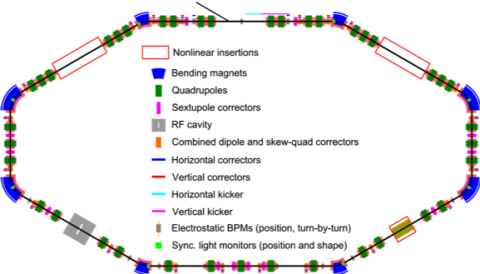Instability suppression using octupoles
The Center for Bright Beams has been researching instability suppression using quasi-integrable octupole channels at the newly commissioned IOTA (Integrable Optics Test Accelerator) storage ring at Fermilab.
Modern accelerators exhibit fast collective instabilities, which can result in particle losses and limit achievable beam intensities. Existing suppression methods are either too slow, or come with side-effects such as reduced beam dynamic aperture (the region where particles can circulate) due to undesirable, 'bad' resonant nonlinearities.
Our solution instead deliberately introduces a special, 'integrable' (meaning bounded, regular motion) type of nonlinearities, which can both suppress instabilities and preserve dynamic aperture. However, implementing such systems requires a special symmetric ring structure along with exquisite control over beam optics, such as that found at IOTA.
Recently, our collaboration has installed and commissioned one of such systems based on a quasi-integrable Henon-Heiles insert consisting of 17 octupoles. We hope to demonstrate its effectiveness at instability suppression during the current winter-spring 2019 run. Ultimately, the goal is to design and experimentally test various integrable lattices at IOTA and elsewhere.

